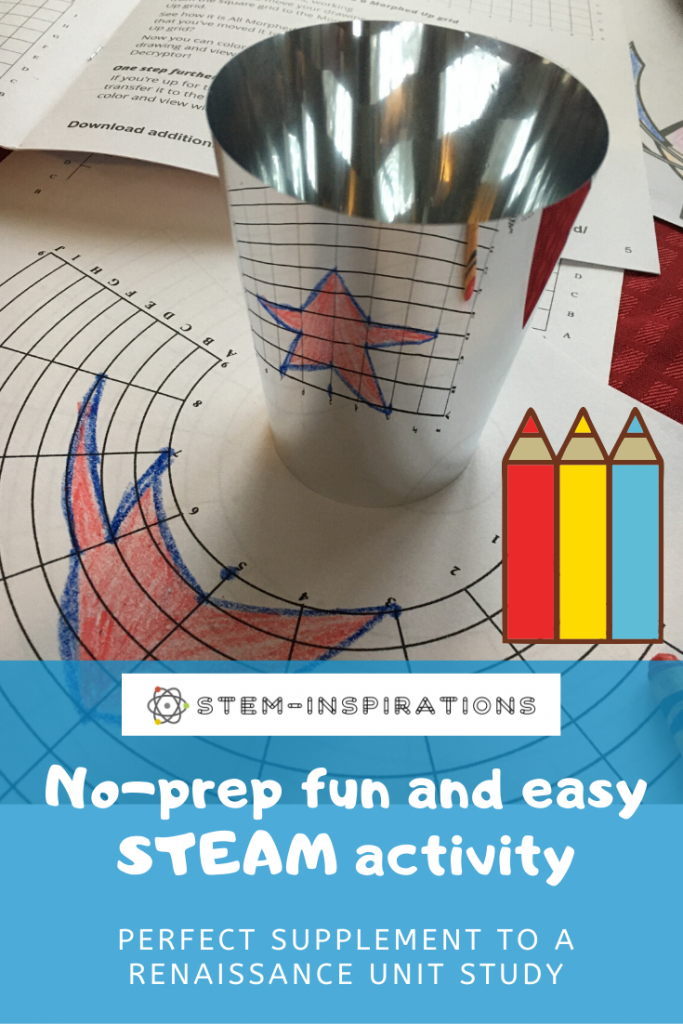
Many homeschool families would like to include project based learning in their Renaissance unit study. The All Morphed Up! kit, by Laser Classroom, is a fun and easy STEAM activity that ties directly to the Renaissance artist and inventor Leonardo Da Vinci. (STEAM stands for Science, Technology, Engineering, Art and Math.)
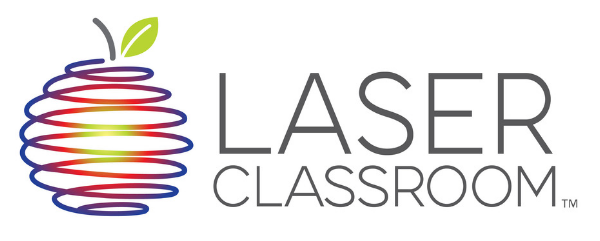
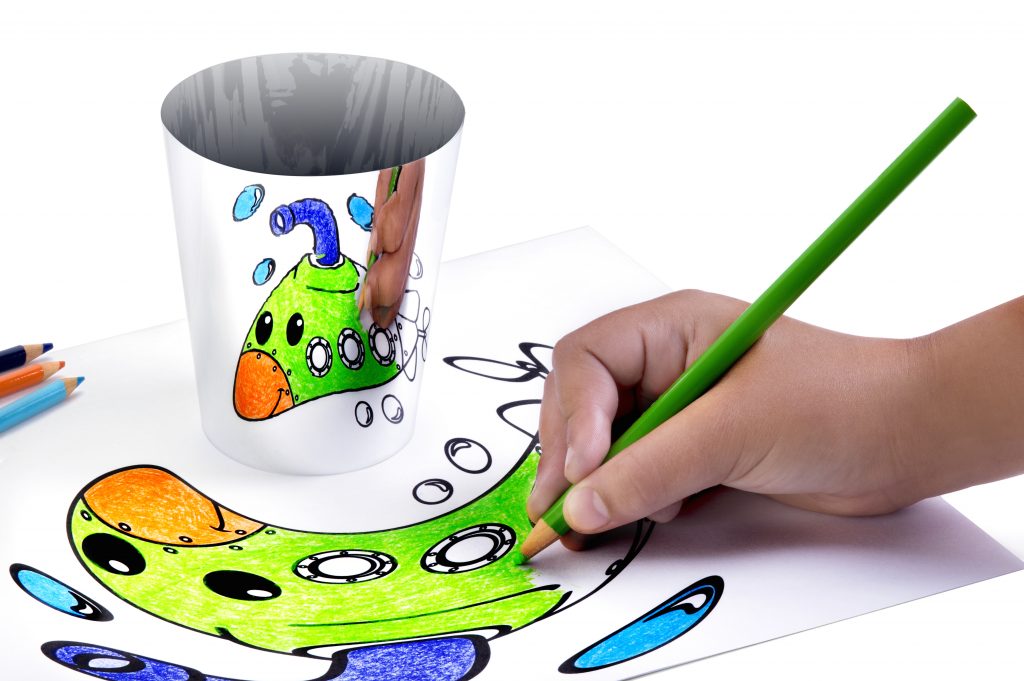
The All Morphed Up! kit comes with 50 pages of fun “anamorph” designs to color, along with a special mirror that allows you see the true design reflected in its surface. The kit also provides instructions and graph papers to make your own anamorphic designs – just like Da Vinci and many other artists of the Renaissance era.
What is anamorphic art?
This word anamorph is a combination of two Greek terms:
- ana, to go back, or again
- morphe, which means shape or form
So, an anamorph is an image that has been distorted, or morphed, in a very specific way. In order to “go back” and see the original image again, you have to know the secret to decrypt it.
Secret decryption
There are two types of anamorphic art. Some artists create images that can be seen correctly only when viewed from a specific vantage point. Other artists paint or sculpt morphed images designed to be viewed with a curved mirror. Light reflecting off the surface creates an optical illusion that makes curved lines appear straight.
Step 1: Color and decode the designs
The All Morphed Up! kit features mirror anamorphic art. Its coloring page designs look quite odd when viewed normally. But place the included conical mirror at the center of the design, and the real image is revealed!
This no-prep STEAM activity combines art with science, technology, engineering and math (STEM). It lets kids experience first-hand the science of light reflection, optical illusions and perspective in art, and one-to-one correspondence in mathematics.
At the same time, it improves visual perception skills, which are so important for careers such as engineering and biochemistry.
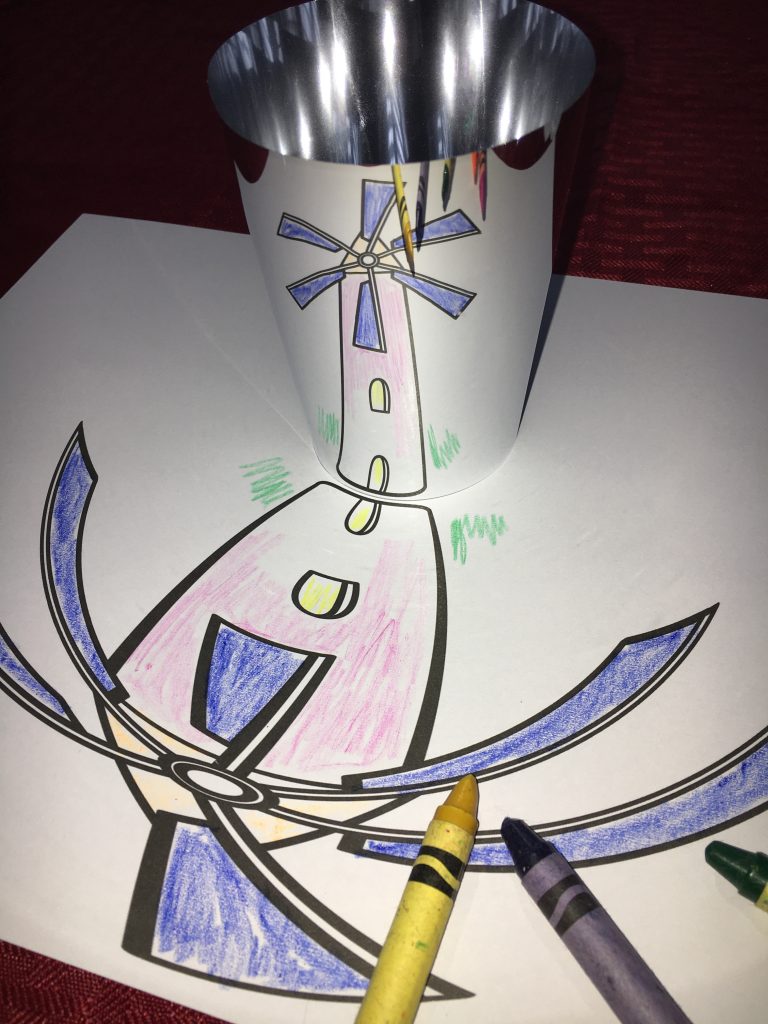
Anamorphic art in the Renaissance
Artists in the Renaissance era were fascinated with new developments in the science of optics. They experimented with light, mirrors, optical illusions, and geometrical perspective in their works of art.
Leonardo was one of the first artists of his time to investigate anamorphic images. One such image is his sketch of a human eye that can only be recognized when viewed from an oblique angle.
Step 2: Mathematical grid art
Artists of the Renaissance used mathematical grids to help them draw objects in perspective. They set up a window frame crisscrossed with a grid of wires in front of a scene they wanted to draw or paint. Then they copied what they saw within each square of the window grid into the corresponding square marked on their drawing paper.
To create one type of anamorphic art, the artist would rotate the grid frame to an oblique angle. Then, as the artist copied what they saw in each window grid onto the corresponding paper grid, it resulted in a distorted image.
Learning the grid art technique
After you’ve practiced coloring and decrypting the morphed designs in the All Morphed Up! kit, it’s time to learn how to create your own anamorphic art. The kit teaches a mathematical grid art technique similar to the one used in the Renaissance.
All Morphed Up! relies on two different types of graph paper. First is a standard grid of identical squares. The square grids included in the kit are labeled with numbers along the x-axis and with letters along the y-axis, similar to a cartesian coordinate system.
Each point on the graph where two lines cross correspond to a letter and a number, like this: A-2 or D-6.
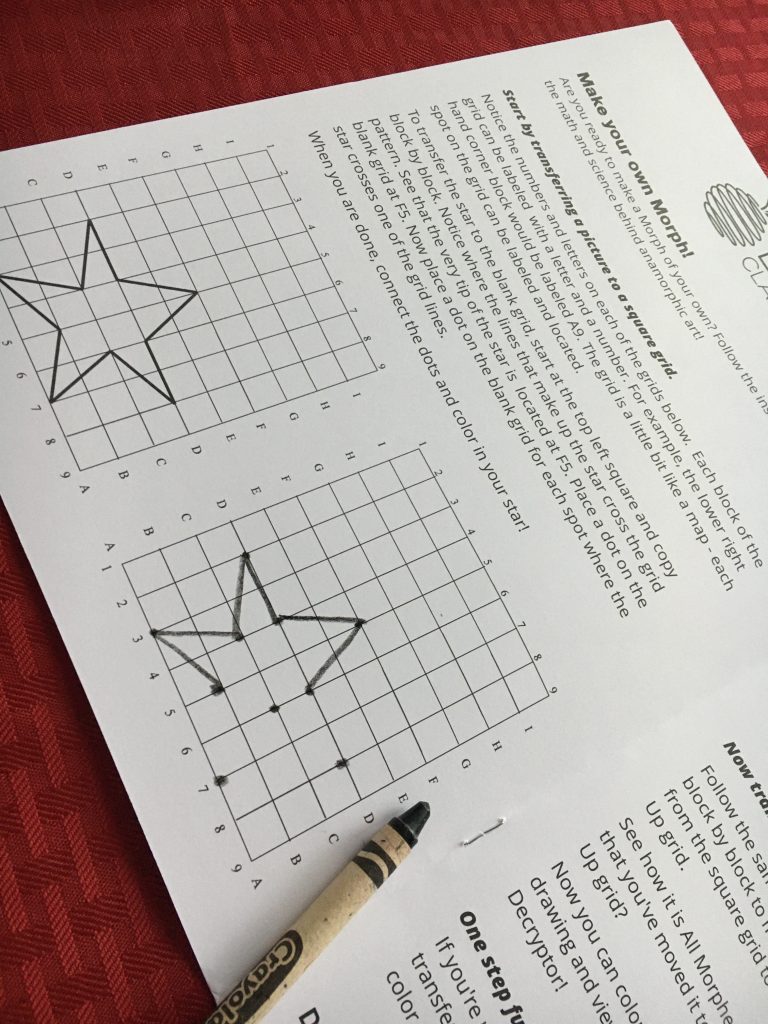
The easiest way to learn how to create a morphed design is with the star drawing in the manual. Before trying to morph the star, first practice transferring the star design to another square grid using one-to-one correspondence.
Notice where the points of the star touch the graph lines at certain points using the letter-number coordinate system. Mark a point at each of the identical points on your second grid. Then connect the points with lines to make a star.
Step 3: Morph your design
Next, to create a morphed version of the design, transfer the points of the star from the square grid to the corresponding points on the morphed grid. This type of circular grid is called a “polar grid” in mathematics. It consists of concentric circles labeled with letters and radial lines labeled with numbers.
So, for example, to draw a point at D-2 on the morphed grid, find the curve labeled “D” and follow it to the number 2 line (see photo illustration). Mark each point of the star on the morph grid. Then, connect the points with slightly curved lines.
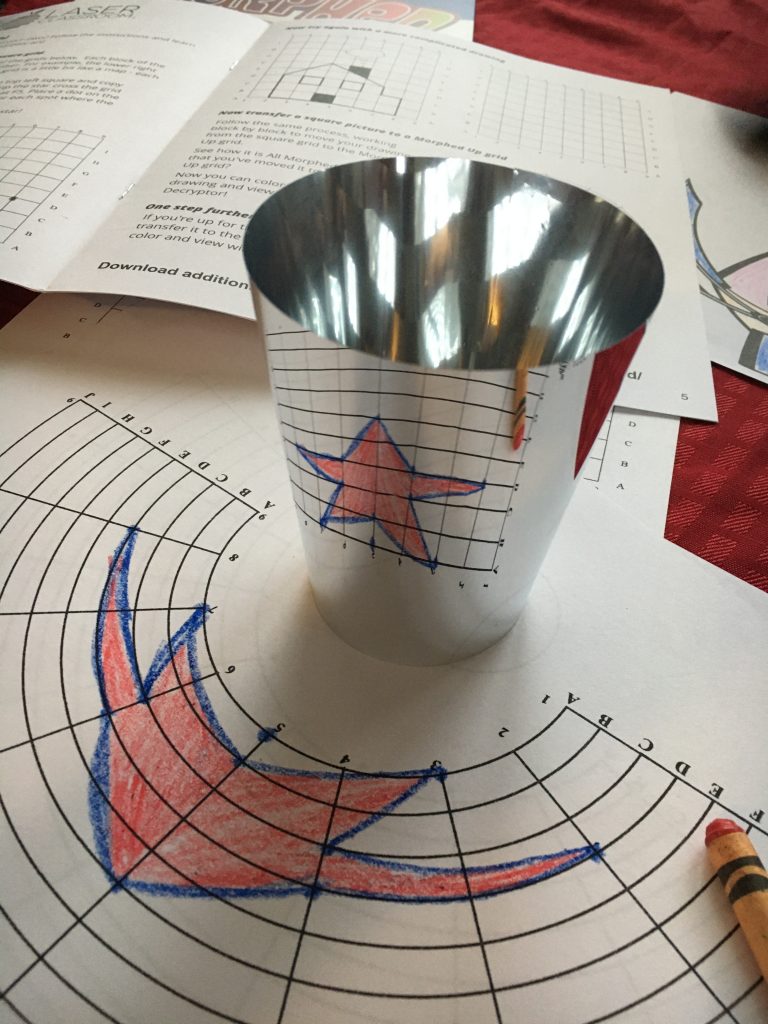
It’s important to make the connecting lines curved. That way, when viewed in the conical mirror placed in the center of the drawing, the curved lines will appear straight.
Easy mathematical morphing
Anamorphic art is based on a special type of geometry called an “affine transformation.” But you don’t need to use complicated math to enjoy the All Morphed Up! kit. In fact, as you transfer your design from the standard grid to the morphed grid, your brain is actually performing that mathematical transformation!
Step 4 (optional): For advanced students
The All Morphed Up! kit is labeled for ages 8 and up, and is a fun and easy STEAM activity for everyone. If your older student has an interest in science, math, world history, or art, they may want to dig further into anamorphic art.
For example, Japanese art of the 17th-19th centuries included designs that could only be read in the shiny curved blade of a Samurai sword. In the West, scientists wrote long treatises examining the phenomenon of anamorphism. And artists through the centuries have created morphed images of forbidden subjects, such as politically incorrect figures like the “Young Pretender” Bonnie Prince Charlie. Only those who knew the secret could decrypt these strange-looking images.
(Parental warning: Some books and online videos about anamorphic art include illicit images.)
What the Kit Includes
The Individual All Morphed Up! kit includes 50 morphed optical illusion coloring pages, a very helpful instruction manual, and a foil mirror which arrives as a flat cutout. To create a conical mirror, moisten one edge, roll it, overlap the edges and seal it. Once you are finished using the mirror, store it flat and dry for reuse.

I advise making photocopies of the coloring designs, the blank graphs in the manual, and the morphing grid. That way you’ll be able to make new designs at will. You can also download additional blank grids at https://laserclassroom.com/wp-content/uploads/2018/10/AMU1_BlankGrids.pdf.
For a homeschool coop or large group project, you can purchase a Classroom Pack. All versions of the All Morphed Up! kit are quite affordable, beginning at less than $20.
Laser Classroom brings STEM to light with hands-on labs, kits and curriculum for teaching and learning about light, lasers and optics. For photos of other students’ morphed up designs, follow Laser Classroom on Instagram @laserclassroom.
You May Also Like
4 Brain-Boosting Reasons to Teach Kids Engineering Drawing—And Why Coding for Kids is Not Enough
Teach STEM at home the easy way with these NO-PREP printable worksheets and activity books
Review and Design Challenge: 3DUX|Design STEAM Activity Play Sets
Copyright © 2019-2020 by Holly B. Martin and STEM-Inspirations.
